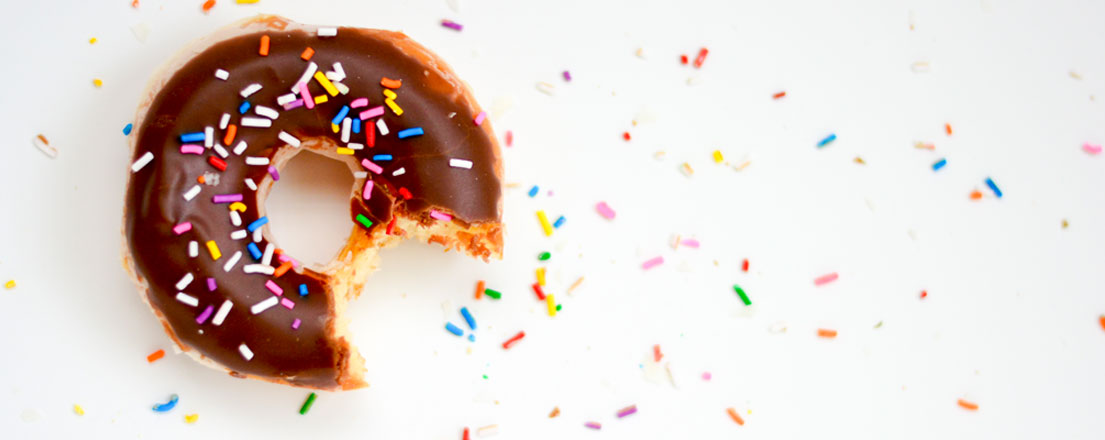
Stressed? Unhappy? Don’t Use Food to Cope
Have you ever wanted to eat a candy bar because your boss was upset with you? And did that chocolaty goodness melt away some of the sting of that interaction? If so, you’re familiar with the soothing power of emotional eating.
Many people – knowingly or unknowingly – use food to make themselves feel better in response to certain emotional situations.
“It tends to be more common with stress, but other emotions that people might eat in response to are sadness, anger and boredom,” says Dr. Lisa R. Matero, senior staff health psychologist with Henry Ford Health System in Detroit. “Celebratory excitement is another common one. It’s really the urge to eat in response to any sort of emotion that someone may experience.”
Emotional eaters don’t reach for carrots and celery. They tend to seek out carb-heavy foods that are sweet, salty or high in fat because those snacks release the “feel-good” brain chemical dopamine.
“It gives us pleasure,” Dr. Matero says. “That’s what triggers that dopamine response, which then makes people feel better.”
An occasional bout of emotional eating may not be concerning, but the habit can become a problem if you reach for food whenever you experience strong emotions or boredom. Excessive emotional eating can lead to weight gain and low self-esteem – as well as relationship problems if you swallow your feelings instead of talking through your troubles. Additionally, if you overindulge, emotional eating can trigger strong feelings.
“You experience what I call ‘food guilt,’ ” Dr. Matero says. “That can actually make you feel worse and then take you down the path to eating even more poorly over time.”
Fortunately, you can break free from unwanted emotional eating habits.
“Recognition is the first step,” Dr. Matero says. “The second step, once you identify that you are an emotional eater, is identifying which emotions you’re eating in response to. And once that’s identified, then the third step is to find strategies other than food to help deal with that emotion.”
“I usually tell people to find things to do for anywhere from 10 to 20 minutes,” Dr. Matero says. “Doing something with your hands can be helpful because that takes away the ability to eat. That could be polishing your nails, cleaning, reading a book, or playing with a child or pet. Also, finding ways to keep your mouth busy: chewing gum. Brushing your teeth is a really popular one because once you brush your teeth, you might not want to eat afterwards.”
“Focus on the taste, how it looks, how it smells,” Dr. Matero says. “There is research to show that people who eat mindfully consume fewer calories.”
You may stop your desire for food by meditating, going for a walk, calling a friend to vent about your problems, or engaging in a hobby. Try to develop a list of activities that effectively distract you.
“One strategy might work in one situation but then it might not be helpful in another,” Dr. Matero says. “Having a variety of different techniques for someone to use is most helpful.”
Many people – knowingly or unknowingly – use food to make themselves feel better in response to certain emotional situations.
“It tends to be more common with stress, but other emotions that people might eat in response to are sadness, anger and boredom,” says Dr. Lisa R. Matero, senior staff health psychologist with Henry Ford Health System in Detroit. “Celebratory excitement is another common one. It’s really the urge to eat in response to any sort of emotion that someone may experience.”
Emotional eaters don’t reach for carrots and celery. They tend to seek out carb-heavy foods that are sweet, salty or high in fat because those snacks release the “feel-good” brain chemical dopamine.
“It gives us pleasure,” Dr. Matero says. “That’s what triggers that dopamine response, which then makes people feel better.”
An occasional bout of emotional eating may not be concerning, but the habit can become a problem if you reach for food whenever you experience strong emotions or boredom. Excessive emotional eating can lead to weight gain and low self-esteem – as well as relationship problems if you swallow your feelings instead of talking through your troubles. Additionally, if you overindulge, emotional eating can trigger strong feelings.
“You experience what I call ‘food guilt,’ ” Dr. Matero says. “That can actually make you feel worse and then take you down the path to eating even more poorly over time.”
Fortunately, you can break free from unwanted emotional eating habits.
“Recognition is the first step,” Dr. Matero says. “The second step, once you identify that you are an emotional eater, is identifying which emotions you’re eating in response to. And once that’s identified, then the third step is to find strategies other than food to help deal with that emotion.”
Try these techniques
Outlast a craving
Many emotional eaters crave specific foods, such as salty chips or sugary sweets, even when they aren’t hungry. Cravings are different from true hunger, which may be satisfied by any type of food. Cravings tend to fade after 15 or 20 minutes, while true hunger gnaws at you until you’re nourished. If you’ve got an emotionally induced food craving, waiting it out can help.“I usually tell people to find things to do for anywhere from 10 to 20 minutes,” Dr. Matero says. “Doing something with your hands can be helpful because that takes away the ability to eat. That could be polishing your nails, cleaning, reading a book, or playing with a child or pet. Also, finding ways to keep your mouth busy: chewing gum. Brushing your teeth is a really popular one because once you brush your teeth, you might not want to eat afterwards.”
Eat mindfully
When you’re triggered to eat by strong emotions, you may devour your food quickly without paying much attention to what, or how much, you’re eating. You might reverse the habit by becoming a mindful eater. Instead of inhaling food while you stare at the television, sit at your table and concentrate on every aspect of what you’re eating. You’ll enjoy your food more and should realize when you're full.“Focus on the taste, how it looks, how it smells,” Dr. Matero says. “There is research to show that people who eat mindfully consume fewer calories.”
Create welcome distractions
Often, realizing you’re reaching for food instead of dealing with your emotions isn’t effective enough to get you to step away from the refrigerator. You’ll have greater success if you have a plan that can help you handle your feelings without eating.You may stop your desire for food by meditating, going for a walk, calling a friend to vent about your problems, or engaging in a hobby. Try to develop a list of activities that effectively distract you.
“One strategy might work in one situation but then it might not be helpful in another,” Dr. Matero says. “Having a variety of different techniques for someone to use is most helpful.”
Still hungry? Check out our guide to healthy snacking

If you’re craving sweet, crunchy or fatty foods, here are 28 ideas for smarter snacking.
Categories: Get To Know Your Plan , Get Healthy
